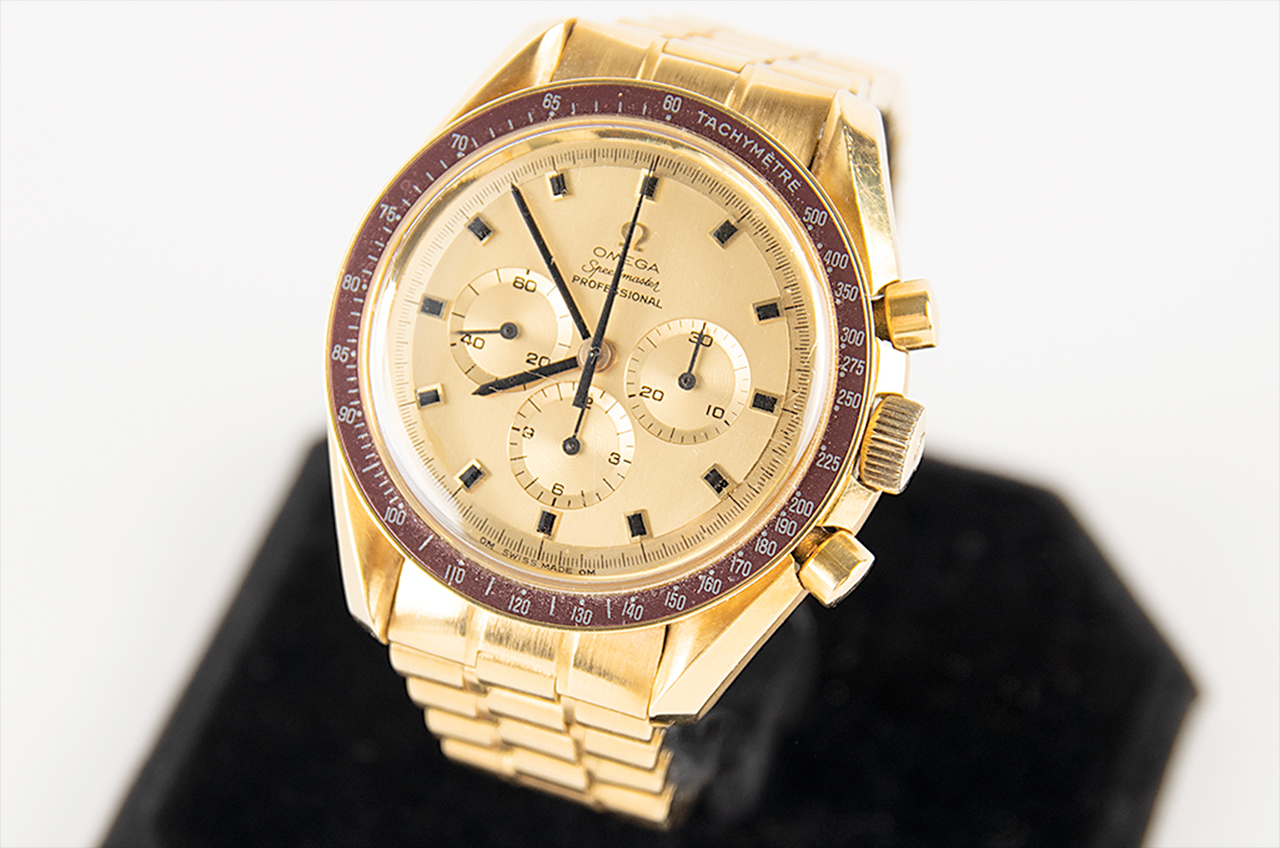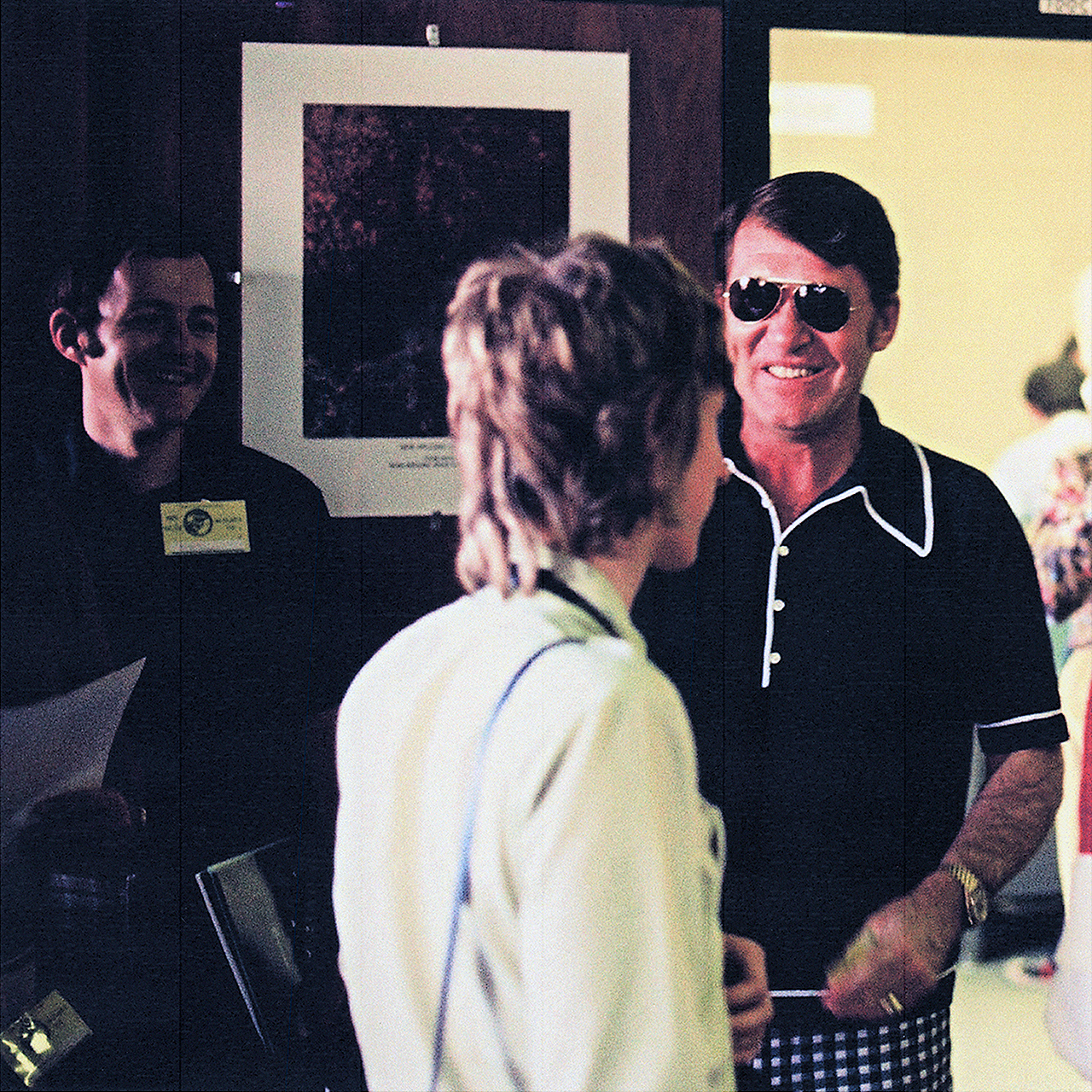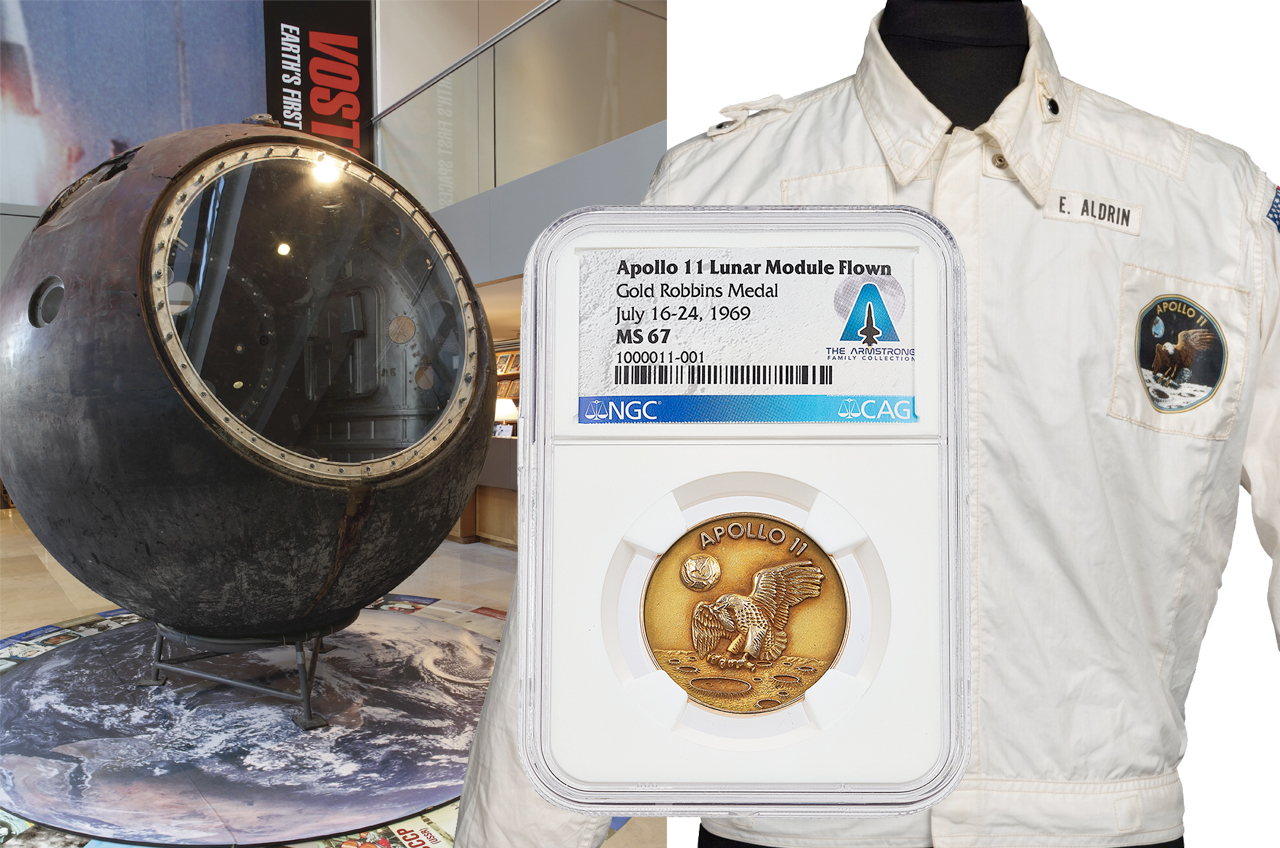Astronaut's gold Omega moonwatch sells for record $1.9M at auction
Most-ever paid for an astronaut-owned timepiece.

A gold wristwatch created in celebration of the first moon landing that was presented to the first person to wear a similar model chronograph in space has sold for $1.9 million — making it the most ever paid for an astronaut-owned timepiece.
The auction hammer fell on Thursday evening (Oct. 20) at $1,525,563 for Wally Schirra's Apollo 11 commemorative Omega Speedmaster Professional. With fees included, the watch sold for $1,906,953.75 as part of space exploration-focused online sale organized by RR Auction of New Hampshire. The winning bidder was not identified.
The sale exceeded the amount paid in 2015 for the only privately-owned watch to be worn on the surface of the moon, a prototype Bulova chronograph used by Apollo 15 astronaut David Scott that sold for $1.625 million (including the buyer's premium), also at RR Auction.
Schirra's commemorative watch, as listed, came with all of its original parts with the exception of a rubber gasket and a replacement burgundy bezel obtained directly from the Omega factory in Bienne, Switzerland. The lot also included a Speedmaster box created for a later anniversary edition watch and a black bezel that Wally Schirra obtained after losing his original burgundy piece.
Also included was a document package from the Omega Museum and a letter of authenticity penned by Schirra's wife, Jo, attesting in part that the timepiece was part of her late husband's collection (Schirra died in 2007 at the age of 84 due to complications from abdominal cancer; Jo Schirra died at 91 in 2015).
A 'Tribute to the Astronauts'
On July 20, 1969, an Omega Speedmaster became the first watch to be worn on the moon, accompanying Apollo 11 astronaut Buzz Aldrin on humanity's first moonwalk. (Neil Armstrong, the mission's commander, left his Speedmaster inside the lunar module to serve as a backup to a broken timer.)

Four months later, at a gala dinner honoring the Apollo 11 astronauts' success, Omega celebrated its own role in the mission by presenting the three members of the crew and 20 other NASA astronauts with an 18K gold version of the watch that had been worn on the moon. (The chronographs that the astronauts used on their missions were NASA property and were later transferred to the Smithsonian's National Air and Space Museum).
Get the Space.com Newsletter
Breaking space news, the latest updates on rocket launches, skywatching events and more!
Each of the gold watches was engraved on its caseback with the astronaut's name and his mission(s), as well as the phrase, "To mark man's conquest of space with time, through time, on time."
"My husband was among the astronauts in attendance that night and, as such, he received watch number eight of the [26] gold watches that were presented to the first group of astronauts to receive these rare timepieces," Jo Schirra wrote in her letter of provenance. "The early number given to Wally was in honor of his being one of the 'Original Seven' Mercury astronauts."
Schirra was the first astronaut to wear an Omega Speedmaster into space, having bought one for himself for his 1962 Mercury mission. He later wore a NASA-issued Speedmaster as he became the only astronaut to launch on Mercury, Gemini and Apollo missions.
Subsequent to the Apollo 11 gala, Omega gifted an additional 10 astronauts with gold Speedmasters for a total of 36 astronaut-owned pieces. The "Tribute to the Astronauts" watches, as they came to be known, were the first Speedmasters to be made of gold.
Soaring sales
Schirra's gold Speedmaster was the second watch from the same series to sell this year. In June, the piece that was gifted to Apollo 11 command module pilot Michael Collins, watch no. 19, sold for $765,000, including the buyer's premium.
By comparison, the watch presented to Apollo 12 moonwalker Alan Bean (no. 26) sold for just $50,000, including the premium, at Bonhams New York in 2015.
Schirra's watch was consigned to auction by space collector and "Space Dealers" (Netflix) co-star Larry McGlynn, who purchased it directly from the Schirra family after the astronaut's death. At nearly $2 million, it is now the fourth most expensive piece of space memorabilia sold at a public sale.

Topping the watch to rank third on the "most paid" list was Neil Armstrong's personal Apollo 11 gold medallion, which flew with him to the moon. Minted by the Robbins Company in 1969 and offered by Heritage Auctions of Dallas, Texas, 50 years later, the medal sold for $2,055,000.
Coming in second is the in-flight coverall jacket that Buzz Aldrin wore when not wearing his spacesuit during the Apollo 11 mission. Complete with Aldrin's name tag, Apollo 11 mission patch, NASA logo and American flag, the garment sold for $2,772,500 at Sotheby's this past July.
The most money ever spent for a piece of space history was the $2,882,500 paid for the Soviet-era Vostok 3KA-2 spacecraft. The capsule flew three weeks prior to the world's first human spaceflight in 1961, carrying a cosmonaut mannequin and a dog into Earth orbit. A Russian businessman purchased the Vostok from Sotheby's New York with the stated intension of returning it to its country of origin.
Follow collectSPACE.com on Facebook and on Twitter at @collectSPACE. Copyright 2022 collectSPACE.com. All rights reserved.
Join our Space Forums to keep talking space on the latest missions, night sky and more! And if you have a news tip, correction or comment, let us know at: community@space.com.

Robert Pearlman is a space historian, journalist and the founder and editor of collectSPACE.com, a daily news publication and community devoted to space history with a particular focus on how and where space exploration intersects with pop culture. Pearlman is also a contributing writer for Space.com and co-author of "Space Stations: The Art, Science, and Reality of Working in Space” published by Smithsonian Books in 2018.In 2009, he was inducted into the U.S. Space Camp Hall of Fame in Huntsville, Alabama. In 2021, he was honored by the American Astronautical Society with the Ordway Award for Sustained Excellence in Spaceflight History. In 2023, the National Space Club Florida Committee recognized Pearlman with the Kolcum News and Communications Award for excellence in telling the space story along the Space Coast and throughout the world.










